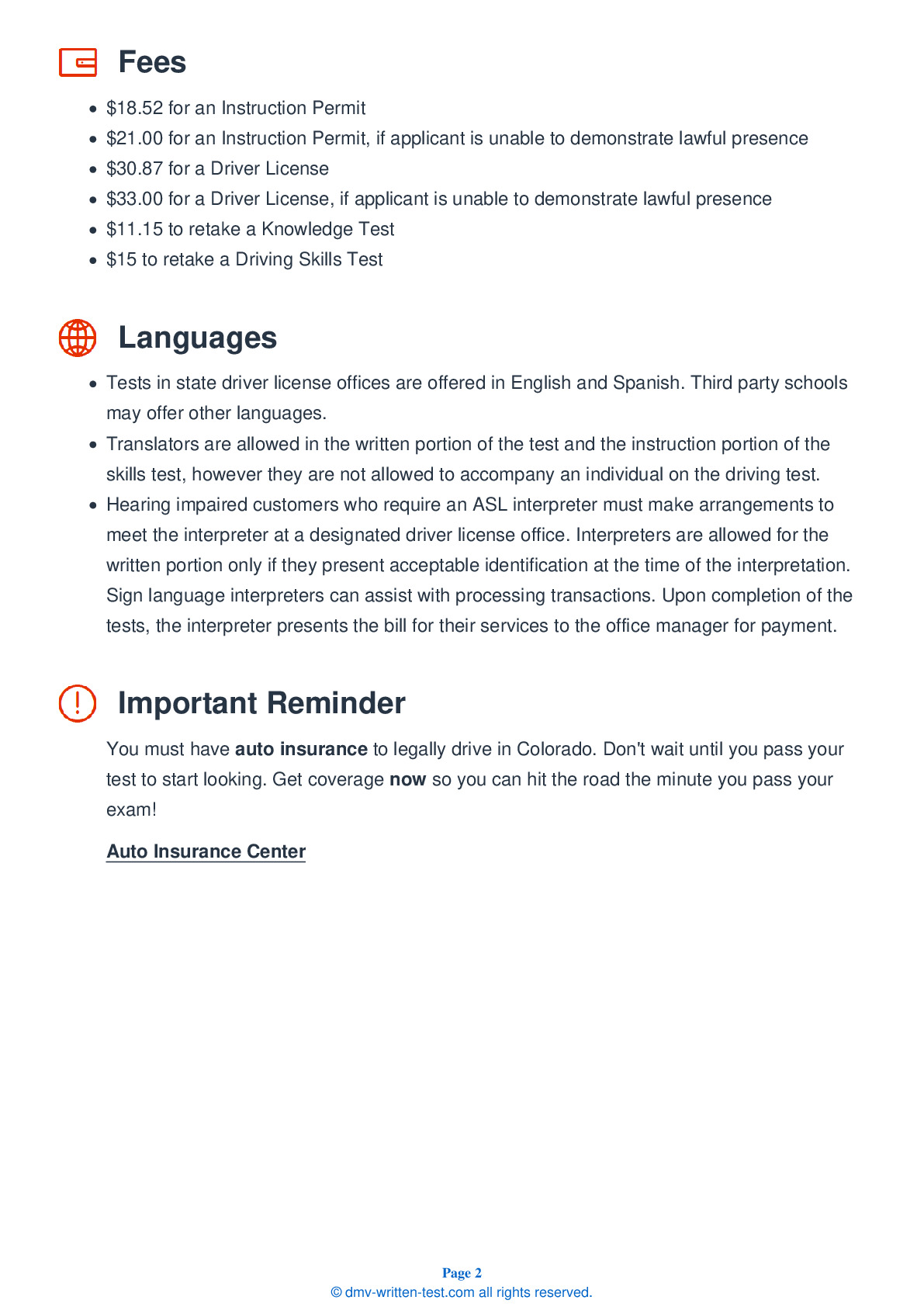2025 Colorado Permit Test 14
The following questions are from real DMV written tests. These are some of the actual permit questions you will face in Colorado. Each permit practice test question has three answer choices. Select one answer for each question and select "grade this section." You can find this button at the bottom of the drivers license quiz. For a complete list of questions and answers for Colorado please visit https://cheat-sheets.dmv-written-test.com/en/colorado/car.
Number of Tests
Number of Question
Passing Score
19. You must stop at a railroad crossing when:
Explanation
You must stop at a railroad crossing when directed to do so by a flagger or stop sign. Stop when flashing red signals and gates are present and operating.
20. When driving to an unfamiliar area, you:
Explanation
When driving to an unfamiliar area, plan your trip in advance. Don’t start with only a hazy idea of where you are going. If your destination is in an unfamiliar area, check the location on a map before you start to drive.
21. Always signal when:
Explanation
Your turn signals should always be used when you make any movement to the left or right. You should use your signal when pulling into traffic from a curbside parking space, moving into a new lane, or passing another vehicle.
22. Your vehicle strikes an unattended parked vehicle and you cannot locate the vehicle’s owner. You:
Explanation
Upon striking an unattended vehicle, stop and try to locate the owner. If you cannot find the owner, leave a written notice containing your name, your address, and the circumstances of the accident.
23. Which of the following is true about driving on a wet roadway?
Explanation
The faster you drive on a wet roadway, the less effective your tires will be at wiping the water from the road. If your speed becomes excessive enough, your tires will lose their grip on the road entirely and you will begin to hydroplane (that is, to slide down the road on a film of water).
24. Your first response to reduced visibility should be:
Explanation
Reducing your speed should be your first response to decreased visibility and dangerous road conditions.
25. You may drive in a High Occupancy Vehicle (HOV) lane if:
Explanation




